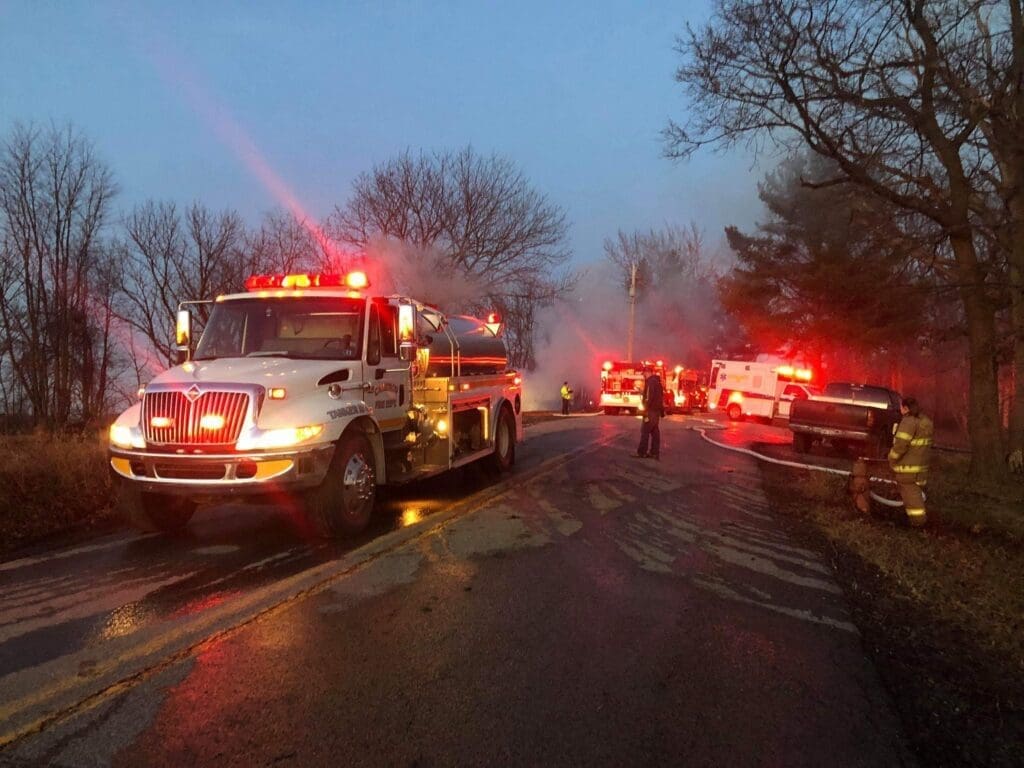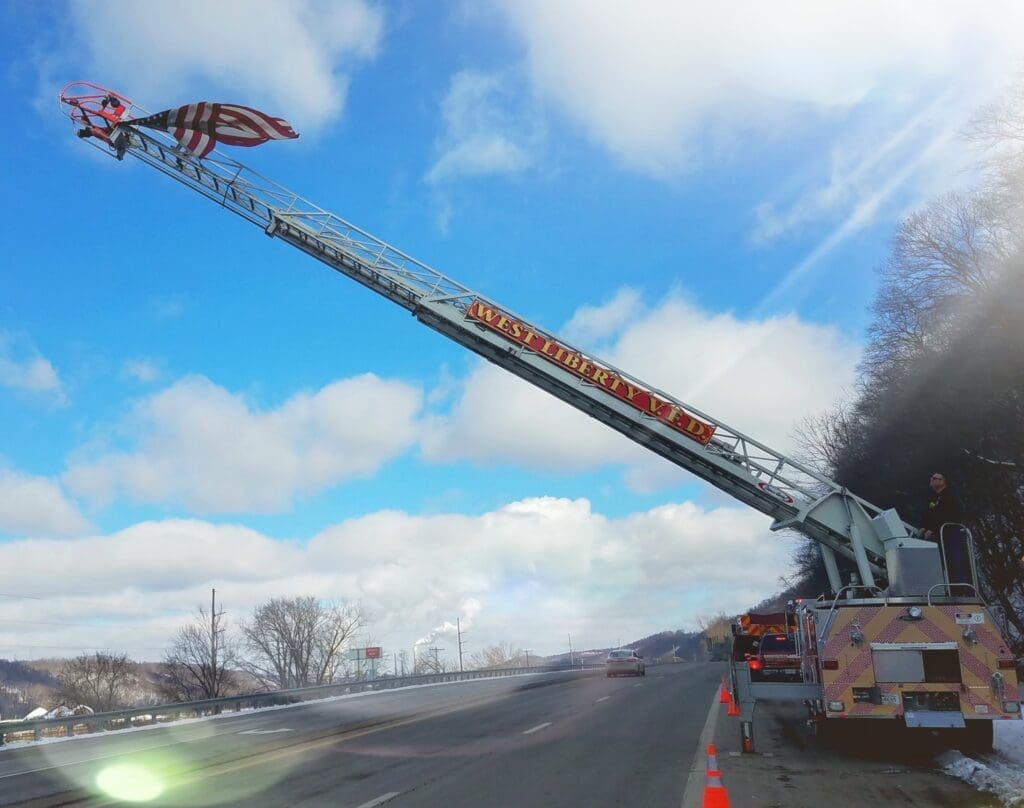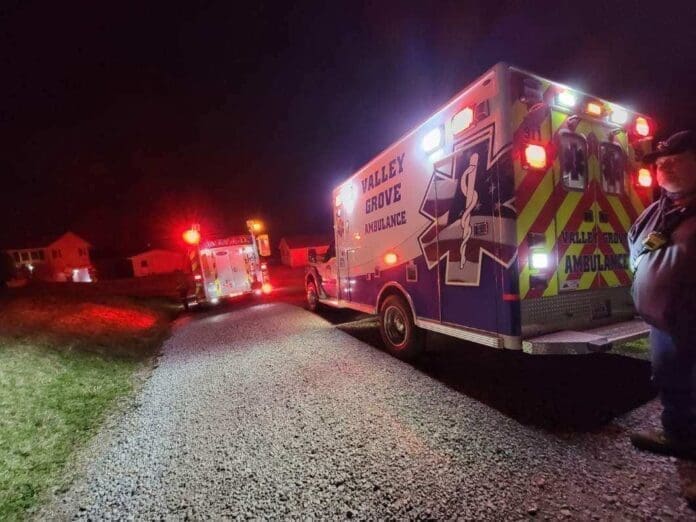There are approximately 30,000 fire departments and 1.12 million firefighters in the United States today, but only 18 percent of those departments include compensated first responders.
In Marshall County, for example, there 17 volunteer fire departments, and in Ohio County, there are seven that protect areas outside of the city of Wheeling. But officials in both counties have recognized the difficulty VFDs have had over the past 10 years with recruiting new firefighters and EMT, and the respective commissions have made moves to offset the shortages.
In fact, the three members of the Marshall County Commission just purchased two more ambulances and have plans to create a new fire station in Moundsville.
“We just want to make sure that we have the people in place for emergency services because that way, our residents know someone is going to come to help if they make that call,” said Marshall County Commissioner John Gruzinksas. “That’s why it is very important to the Commission that we staff these squads with paramedics, and now we have 24-hour service in the Cameron area.
“That was once an underserved area in the county because of how remote a location it is,” he said. “So, we have the station with a staff that works out of that building, and we’re also adding a new location in Moundsville. The services are growing because they have to because we want to make sure no one is neglected or even feels as if they are.”

Vast Majority
According to the U.S. fire department profile distributed by the National Fire Protection Association, an estimated 80 percent of United States citizens are protected by firefighters and EMTs from volunteer stations.
Across the nation, around 50 percent of all firefighters are between the ages 30-49 years old, but that is not true in Ohio County.
“I do believe that in the future we’re going to have to have paid individuals as EMTs and firefighters just like the ambulance does now in Marshall County,” Gruzinksas explained. “Where I live in Glen Dale, the same guys have been at the fire station for the past 22 years because volunteering like they have is not an attractive thing to do anymore. That’s why it’s been a challenge to get minimum staffing.
“My opinion is that we’re going to reach the point where we will have to have paid firefighters, too,” he said. “Maybe not fully staffed, but I believe we’ll have to have some paid guys to be there to help out those dedicated volunteers because, God love them, they are aging just like I’m getting older. Firefighting is a tough business and thank God we have had those volunteers, but I believe the Commission will have to help them with staff in the future.”

Busy, Busy, Busy
A plethora of economic changes have taken place throughout the Upper Ohio Valley during the past several decades, and most of them have not proven positive. For example, about 30 years ago it was the norm for a family to have only the husband/father working a living-wage job in a mill or a plant, and the wife/mother to remain home to nurture the couple’s children.
These days such a situation is rare because more often than not the husband and wife are both employed, and sometimes one of them has a second job. That scenario is one of many reasons fewer males and females are volunteering to be firefighters or EMTs.
“And it’s not just in Ohio and Marshall counties either. That’s the reality for most Americans nationwide,” explained Lou Vargo, the director of the Wheeling-Ohio County Emergency Management Agency. “Plus, everyone is very busy these days with their families, and a lot of people are working two jobs trying to make ends meet. They don’t have the time to do the training let alone go out on emergency calls, and that’s the case everywhere these days.
“Joining a volunteer fire department is a big commitment, and I do believe there will always be a need for volunteers, but I do believe we may have to place paid people in some of our stations in Ohio County,” he said. “We refer to those locations as ‘combination stations,’ but I do believe volunteering for a VFD is a calling people have, and I don’t think it will go away. I know people believe that in 10 years the stations will be all paid, but I believe that calling will still exist for a long time.”
Vargo was instrumental in developing a Commission-funded ambulance service in Ohio County a few years ago, and the station is based at The Highlands along Interstate 70. Those employees work mostly during daytime hours to respond to emergency calls since most of the volunteers are busy working.
But Vargo confirmed the VFDs in both counties will continue their recruiting efforts so the rural stations can remain operational.
“In Ohio County, we have great volunteer fire departments and great equipment, too, because of how dedicated those men and women have been for a long time,” Vargo said. “And I hope to see that continue because those men and women are a dedicated breed of people, and we are working very hard to recruit new members and retain the members those departments have now.
“We’re also looking to increase the number of training opportunities so we can keep the current members as involved as possible,” he explained. “Training is a big part of being a member of a volunteer fire department, so we want to make sure we make it available to those members as often as possible.”


